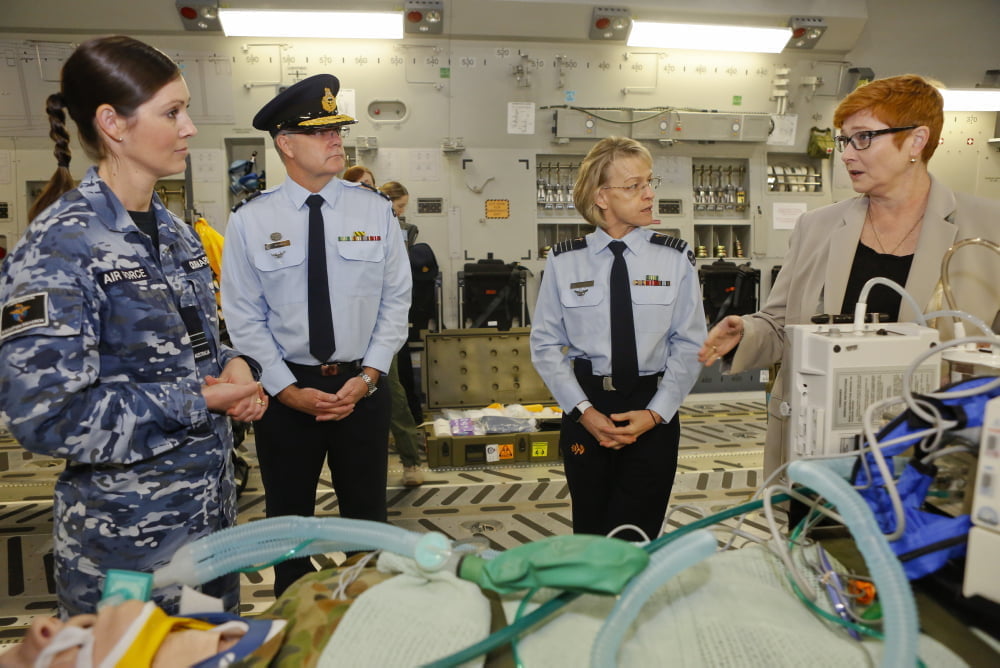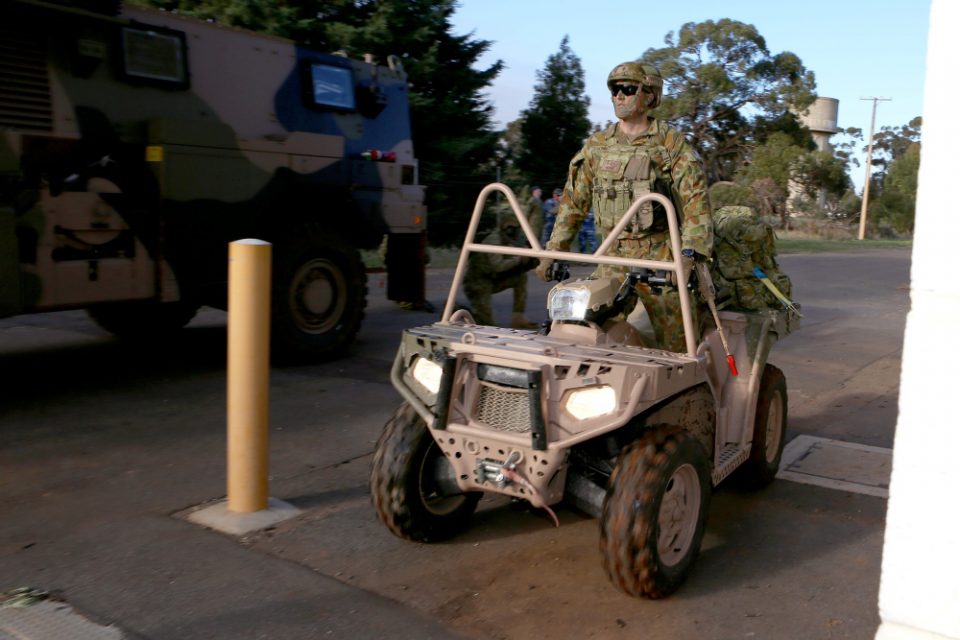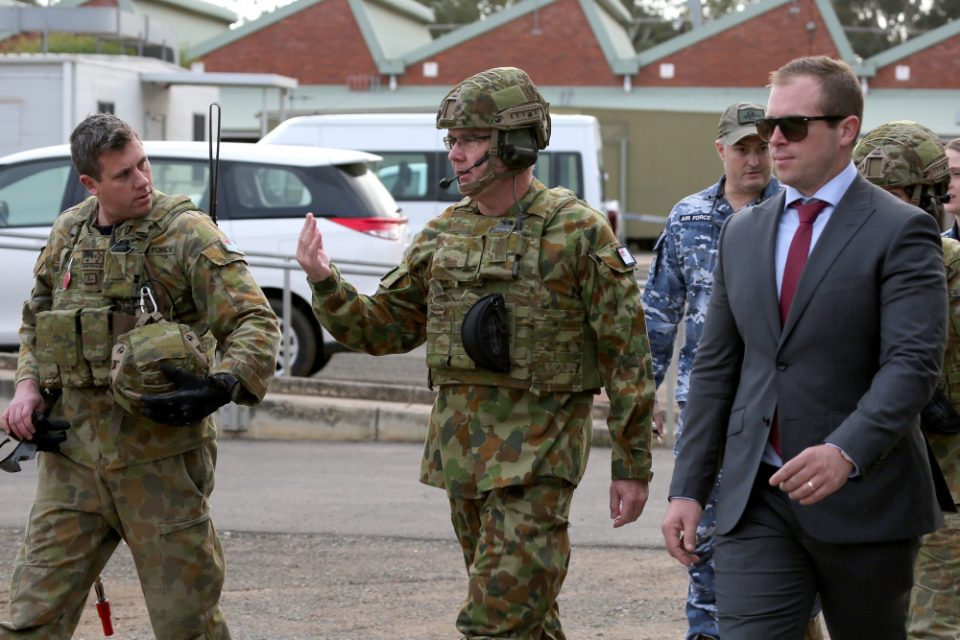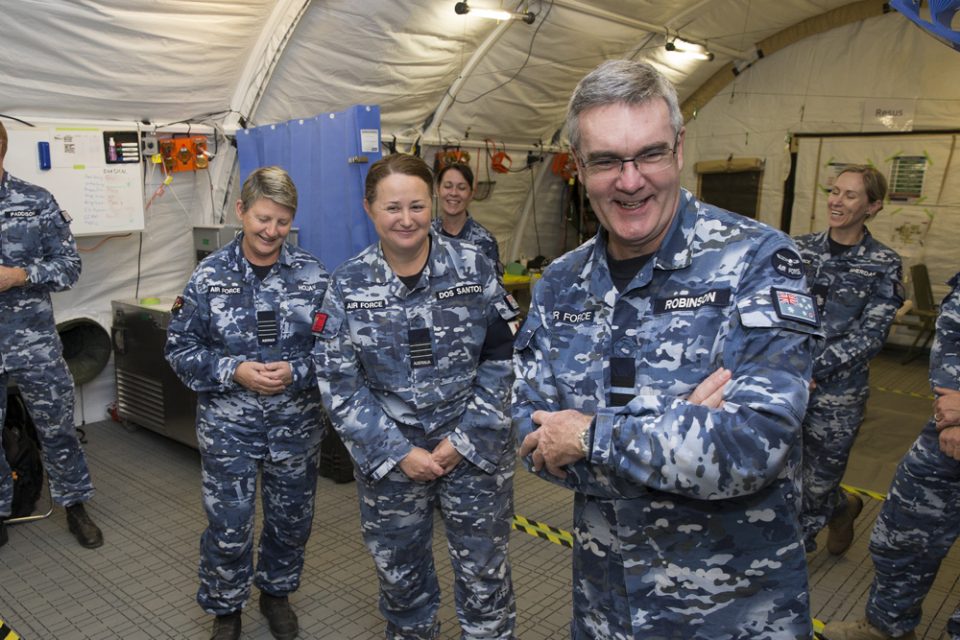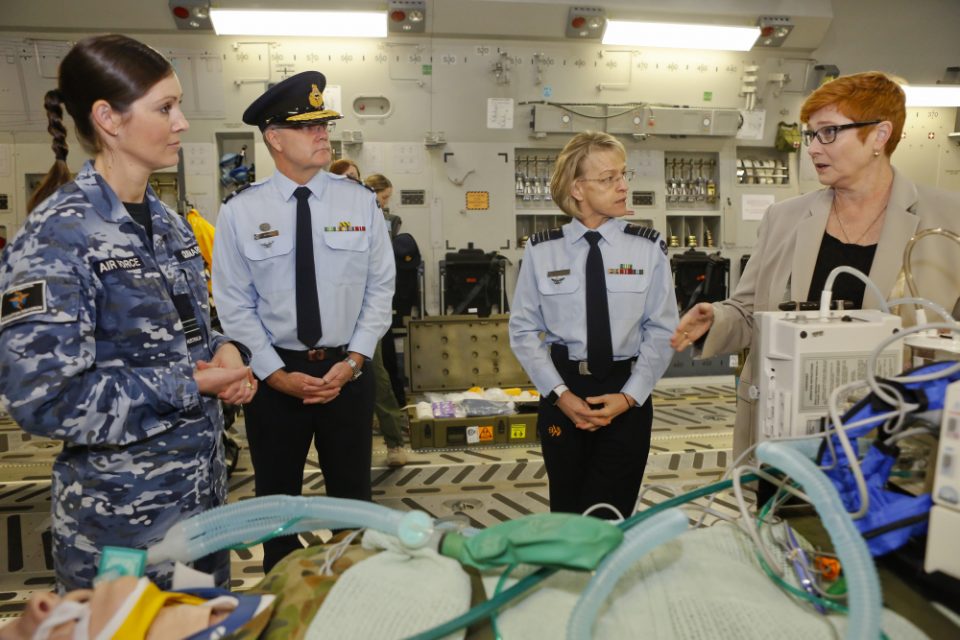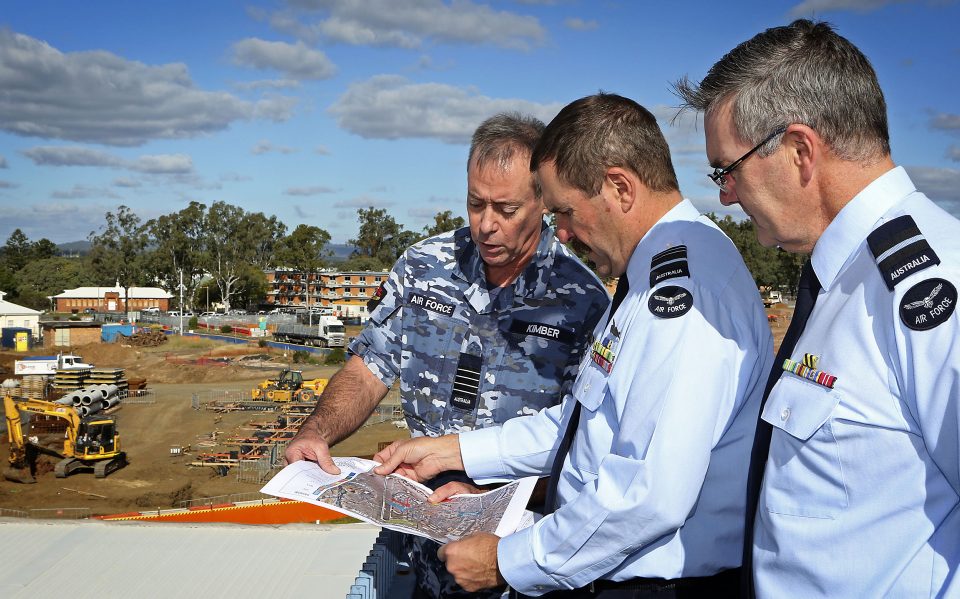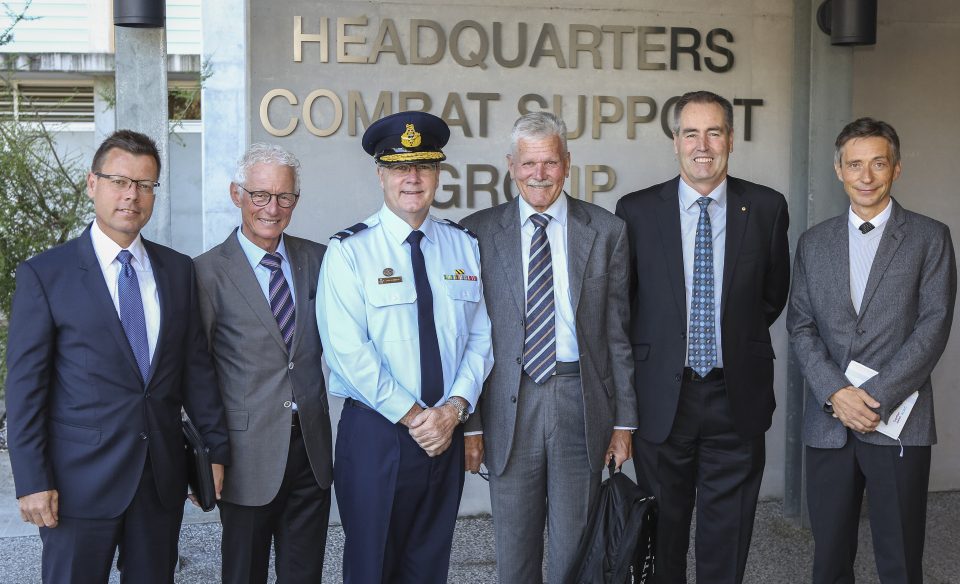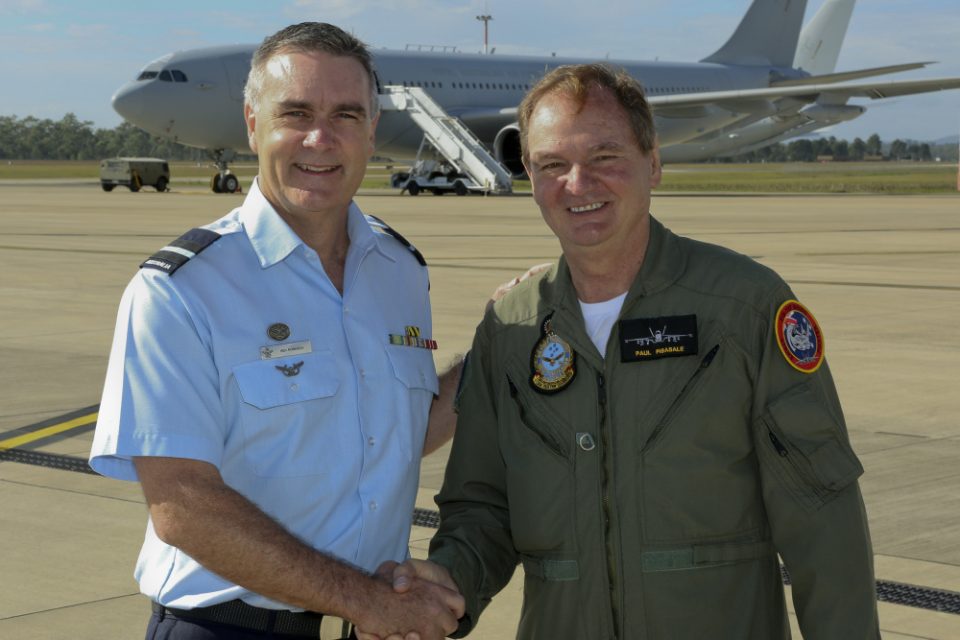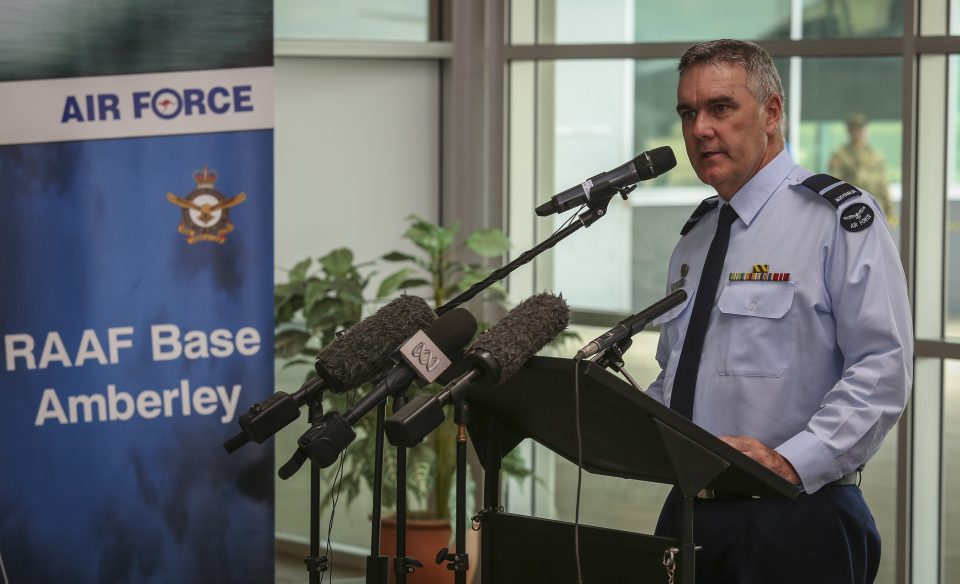By Robbin Laird
During our latest visit to Australia, we had a chance to talk with the Commander of the RAAF’s Combat Support Group, Air Commodore Ken Robinson at his office at RAAF Amberley. With a country of the size of the United States but only about 25 million people and a much smaller Air Force than does the United States, it is far to say that even operating domestically, the RAAF is an expeditionary air force.
This means that it has to work its own territorial support in ways that mesh effectively with support provided for out of area operations.
It means as well that effective logistical footprint and significant use of reserves is a key part of how Australia addresses air combat support. 25% of the RAAF’s rserve budget goes to CSG activities.
And given the engagement of allies coming to Australia to exercise with the ADF, consideration must be given to support for allies as well when they arrive and operate in the Australian continent.
A sense of the scope of the challenge domestically can be seen in the graphic below which identifies the basic locations of the CSG correlated with the basing situation in Australia:

The demand side of growing threats in the region, and engagement in the Middle East, and elsewhere, has put significant pressure on resources.
And threats like North Korea and others in the region, are leading to considerations for mobile basing and ways to support movement of assets in times of crisis to maximize survivability while ensuring effectiveness.
This later point is somewhat a return to the past as the Aussies used mobile basing when facing the Japanese threat to Australia in World War II.
What mobile basing might mean in today’s world is a work in progress, but one which will need to deserve more attention going forward.
The basic structure of the CSG encompasses three wings with notably distinct yet complementary mission objectives.
The 96thWing focuses on fixed airbases. The National Support Base is comprised of 13 airbase squadrons and 15 aerodromes. And the baseline capabilities provided by this wing are: airbase C2, base support coordination, fuel storage and delivery, fire fighting and rescue, catering, cargo and pax handling, ground transport and ground equipment maintenance.
The 95thWing provides support for expeditionary airbases and is comprised of nine squadrons. The Wing provides key expeditionary capabilities: force generation, training and standards, tactual communications, force protection, airbase activation, airfield recovery, airfield activation, airfield recovery, airfield engineering, explosive ordinance disposal, deployable kitchens and online contingency response.
The Health Support Wing provides the support crucial to life support throughout the RAAF. The Wing has a number of capabilities, including various deployable capabilities, surgical teams, aeromedical evacuations, specialized health training and a key role for specialized reserves.
The personnel side of the Wings is a crucial part of providing effective support.
And here the Australian government has put in place a system to draw upon reserves whereby employers are incentivized to provide for flexibility for skilled personnel to serve.
There are both punitive and positive measures to ensure the flexibility of personnel being able to work in the civil sector but to serve in the RAAF as well. This is especially crucial with regard to the Health Support Wing that draws extensively upon Australia’s leading health practitioners in the civil sector.
The RAAF works closely with the USAF as well both in terms of cross learning with the USAF’s Contingency Response Groups as well as the USAF sorting through the growing demand for supporting mobile basing in the Pacific, in terms of flexibly moving away from an over-reliance on fixed basing in the region in times of crisis.
But as the Air Commodore pointed out, the two Contingency Response Groups in the USAF can focus full time on contingency response whereas the RAAF has to include that capability within the overall force.
We discussed at some length the challenge of rethinking mobile basing in times of crisis, which is a work in progress.
“We are having to reacquaint ourselves with some tasks and challenges which we parked to the side a bit while we were in the Middle East for so long.
“We did not have to worry so much about mobile basing to counter the principal threats in that theatre.
“The mindset is in transition now.”
This clearly is an Army and Air Force challenge.
“We are good at supporting maneuver with our tactical transport aircraft and Australia’s Army aviation capability, including the Tiger Reconnaissance Helicopter, but what we need to do is move to the next level of support to maneuver the most lethal part of our air power capability across a range of airfield options.”
Core capabilities such as providing fuel for air systems when operationalized for a mobile airbasing force on Australian territory are clearly different from supporting a fixed airbase.
For example, “expeditionary fuel capabilities is something that’s very much on the forefront of my mind. Lean and agile support packages to operate expeditionary airfields are also key, so that we can offer the best possible maneuver options to the aviators without tying down strategic airlift.”
The logistics side of enhanced support for Australian forces in Australia to deal with crisis contingencies is also a work in progress.
The Aussies rely on overseas support and training and that will continue in many ways, but there is a clear need to enhance domestic sustainability as well.
And that will encompass new ways to work with industry and to find ways to move personnel from the forces to industry and back again.
According to Air Commodore Robinson, the Air Force has introduced a type of service that allows for uniformed personnel to undertake industry placements.
This desire for closer engagement between Defense and industry is a work in progress, but clearly something, which the current Defense Minister is focused upon.
“When the Minister was visiting Amberley a couple of months ago, I was fortunate to brief her on how we are working closely with the local city council to set up a local defense industrial partnership between the base, the city council and defense industry.
“We can see the fit of such an initiative with government’s efforts to deepen the role of, and opportunities for, Australia’s Defense industry.”
Put simply and bluntly, “I have to make sure that our airbases in Australia can effectively function to satisfy an ever broadening range of operating concepts, whether from fixed or mobile airbases. And that will require both innovation and greater agility on the support side of the equation.”


